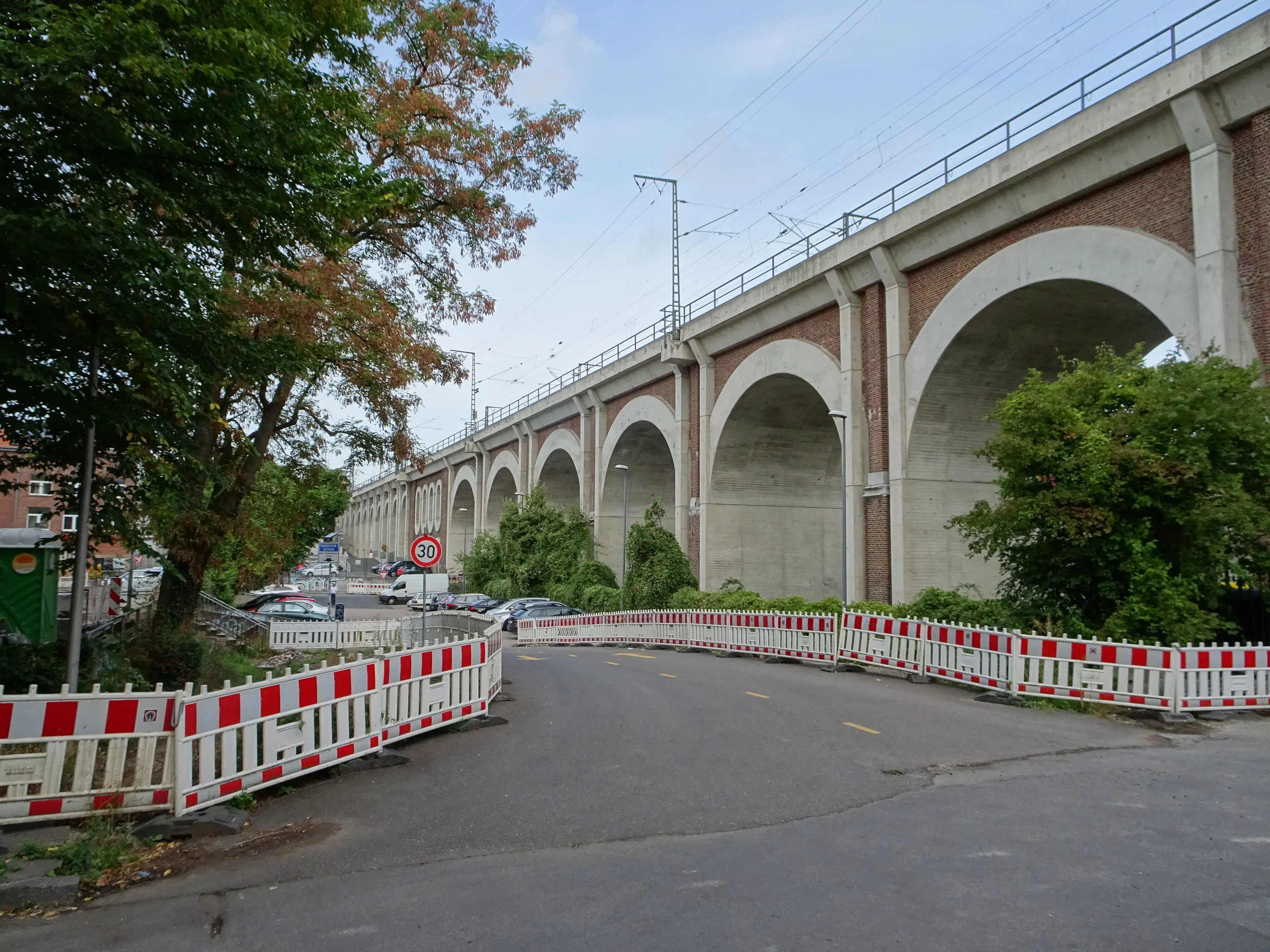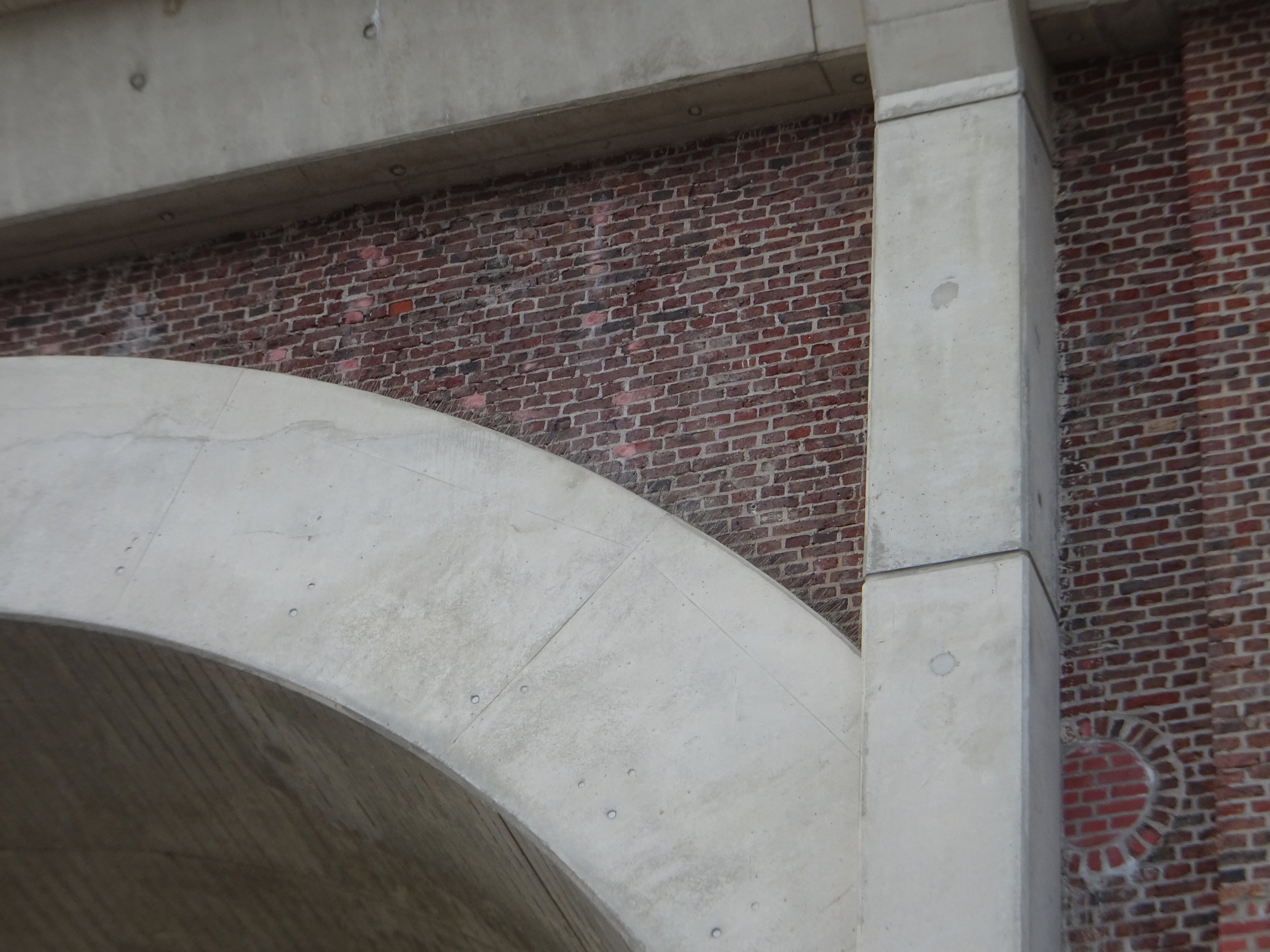At the end of my European tour I had planned to visit Brugge but the trains didn’t work so my last stop was a return visit to Aachen, the seat of Karl der Grosse, otherwise Aix of Charlemaigne. I had little time to explore on my last visit. Only slightly longer this time around. I wasn’t looking for bridges here but as we pulled into the city we crossed a long viaduct which had to predate the obvious concrete of the apparent construction. As we swung round a bend it was possible to see that is was indeed a brick viaduct recently heavily modified with concrete. So it was quickly added to the programme for the visit.
As usual, there is a pdf here.
It is a fascinating mix. The concrete rings are much thinner than they look as they wrap around the edge of the brick. I am pretty sure the columns do the same. I suspect that the whole deck is now a concrete trough. The overall appearance works well, I think.
Dating it isn’t too hard. Note that the Bahn, like Network Rail, go in for reskinning! I prefer always to describe that as papering over the cracks. It almost certainly removes the primary structural layer and replaces it with often unconnected and unstressed material.
Here, you wouldn’t know there was a brick ring at all.
Or, indeed here. I wonder what those eyes were originally. Are they through, or above, the backing?
Or, indeed here. I wonder what those eyes were originally. Are they through, or above, the backing?
There’s a bit of (presumably old) deterioration in the stone at the top of the pier.
Gosh, that’s a mess. Are there three vertical cracks in there?
Suddenly, here, much more is revealed. A 3 brick ring, bonded in 1 brick layers (traditionally, in brickwork a brick is the length not the width).
There is a nasty fracture right in the centre at the bottom of which more soon.
Unsure, at this stage, whether this is the other end of the pier in the last pic. There is some very interesting patching in the brickwork bottom left.
Tilting down a little!!
Nice to know that poor workmanship gets perpetrated outside UK! Can’t imagine how this got to look like this, though the horizontal dry joint is clear enough.
Are those ripples hollows in the vertical face? Surely not wavy courses?
Same thing the other side of the pier. Those strong diagonals in the mortar are surely only strong because they are emphasised by the white arch ring.
I said we would get back to this. Is the vertical fracture part of the damage being repaired or an unfortunate side effect of the repair itself? I suspect the latter.
It goes on a bit though.
And on! And at both sides. The interesting question is whether these cracks pre-date the works or are caused in part by the stiff additions.
There are several different mortars here at least some of the pointing is in cement and is set to cause trouble in time.
Some wonky geometry and almost exposed stirrups rusting already.
And finally, what is that about? I presumed water was coming through but I also assume that the arch liner is reinforced over the full width so there will surely be trouble brewing under there. Turns out that there is a drain from the arch crown carried to the pier in the lining.
The slightly paler stripe top to bottom is, I think, the crown infill concrete. The joint that is covered is mid width.
The Americans have an expression, the normalisation of deviance. That is getting familiar with things being wrong. I see far too much of it in UK. It is slightly sad (but surely not surprising) to find similar things here in Germany. One must not extrapolate too far of course, but the people who do this work are often not well regarded in modern society. It is arduous work, often carried out in difficult conditions, rarely well paid. I believe it is important to explain why as well as what is needed. Why should this work be different from everything else we do.
And that is 2019 started. Happy new year everyone. April’s edition will mark 100 months. I am still regularly asked how long I can continue but there are plenty to go at yet.



















